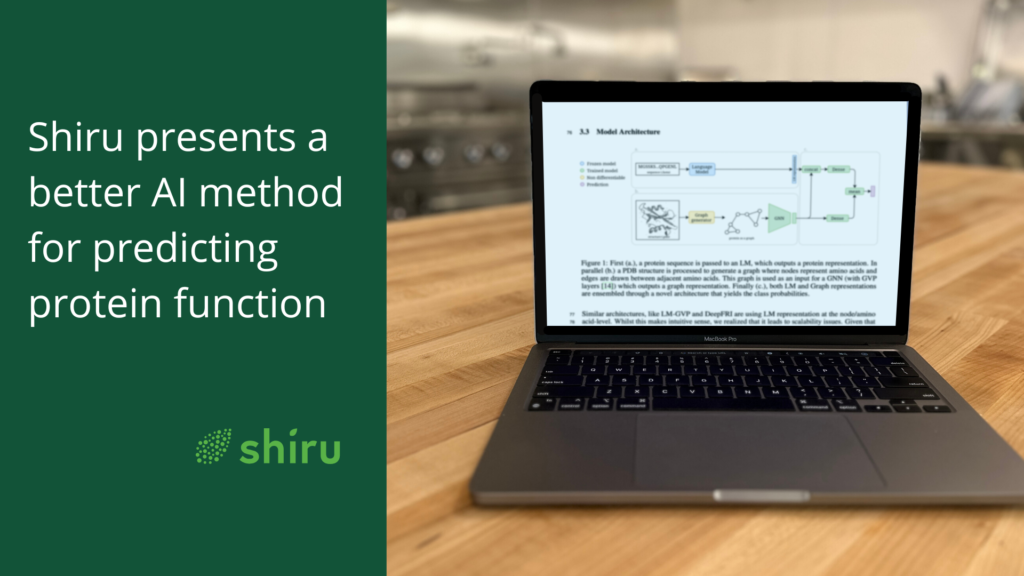A Mission in Sustainability
How are we going to sustainably feed everyone on the planet as our population grows to 9 billion by mid-century? Many current agricultural practices, in particular those developed to support the meat industry, are demonstrably unsustainable and environmentally damaging, motivating a movement towards plant-based diets. Multiple food or ingredients companies focus on the commercialization of plant-derived proteins as an alternative source for calorie intake. Typically, in order to create plant-based food that has the same taste and mouthfeel as animal incumbents, food manufacturers use a variety of molecules capable of gelling, emulsifying, and structuring the product (e.g. scaffolding alternative meat) to deliver the right sensory properties to the consumer. While these molecules are helpful in tailoring texture, many of them are non-natural compounds that are undesirable from a labeling perspective and even more of them provide no nutritional value whatsoever. Shiru’s objective is to provide natural, functional protein alternatives to environmentally damaging animal proteins and synthetic, non-nutritive texturizing agents with clear benefits to both consumers and the planet.
How can we identify functional proteins that replace traditional ingredients? Answering this question is core to Shiru’s approach. At Shiru, we take advantage of technologies born to solve challenges in other industries (including bioinformatics, AI, and precision fermentation) and apply them towards this critical and urgent challenge. We leverage cutting edge machine learning, high throughput fermentation, and proprietary, miniaturized functional assays to select, screen, and ultimately produce functional proteins for food applications. Our cross-functional technology platform is enabling us to build a premier database that links protein identity with food-related functionality. One key element to link protein identity to protein function is having reliable structural information on these important food molecules. The recent advent of AlphaFold positions us to utilize millions of structures of those proteins, creating a premier and unique portfolio of functional food proteins.
AlphaFold – The Revolution in Numbers
One of the most resource consuming steps in the discovery of functional food proteins is experimentally validating that a protein performs a target function. Ideally, a computational algorithm will accurately predict the function and provide high quality protein candidates for experimentation. This is a very challenging task.
Proteins are biomolecules made of chains of building blocks called amino acids. These chains of amino acids fold and adopt a three-dimensional structure that is required for their function, much like a 3D-puzzle (Figure). Knowing the structure is invaluable for more accurate algorithms that predict protein function.
Current technology makes it easy to retrieve and analyze the sequence of a protein (i.e the consecutive order of amino acids), but not its structure. The more we know about a protein structure – the better we can determine its function, hence protein structure is resolved via slow and expensive experimental procedures. Computational methods for predicting the structure exist, but high accuracy can be reached only in low throughput, since the computational challenge is immense. Typical proteins include 300 amino acids of 20 types, therefore the number of possible three-dimensional folds for a given sequence is significant (for example, a 3D-puzzle like the one pictured here with 300 links has almost infinite possible spatial arrangements). The AlphaFold algorithm is a breakthrough in the field of the protein folding challenge: It uses advanced machine learning techniques to generate very accurate protein structure models for almost any given protein sequence.


45 years of experimental structure determination have yielded 181,000 protein structures deposited in the public domain, while last month, the AlphaFold2 (i.e. the advanced version of AlphaFold) algorithm was used to release 356,000 highly accurate models of protein structures, and the European Molecular Biology Laboratory (EMBL) AlphaFold team noted that 135 Million(!) additional models will be released in the coming months. AlphaFold is a success story of using sophisticated machine learning to address real world challenges in Biology. It is certainly a transformative achievement that revolutionizes the field.
AlphaFold Models are Already Embedded in Shiru’s Pipeline
This wealth of information is already being used for biopharma, synthetic biology and agriculture applications. At Shiru, we are pioneering its utilization for food. We use these protein structure models to help us determine protein function, enabling us to identify the best protein ingredients for all food categories based on their inherent chemical and structural identity.
Naturally, beautiful challenges are waiting ahead. The relationships between protein structure and function are complex, and deciphering them requires novel tools that ingest and analyze higher than ever numbers of protein structure models. We at Shiru are one step ahead: already producing non-trivial, testable hypotheses from these data and models, based on the predicted structures of plant proteins and the structures of known functional food proteins.
AlphaFold has unlocked unlimited potential for us and we are excited to be trailblazers in the food industry to use this technology to make the world more sustainable. Curious to hear more about our findings? Follow us on LinkedIn or sign up for our newsletter where we will continue to share our latest innovative discoveries.
AlphaFold® is a registered trademark of DeepMind Technologies Limited. Precomputed structures were downloaded from https://alphafold.ebi.ac.uk/ and the data are available for academic and commercial use, under a CC-BY-4.0 license.




